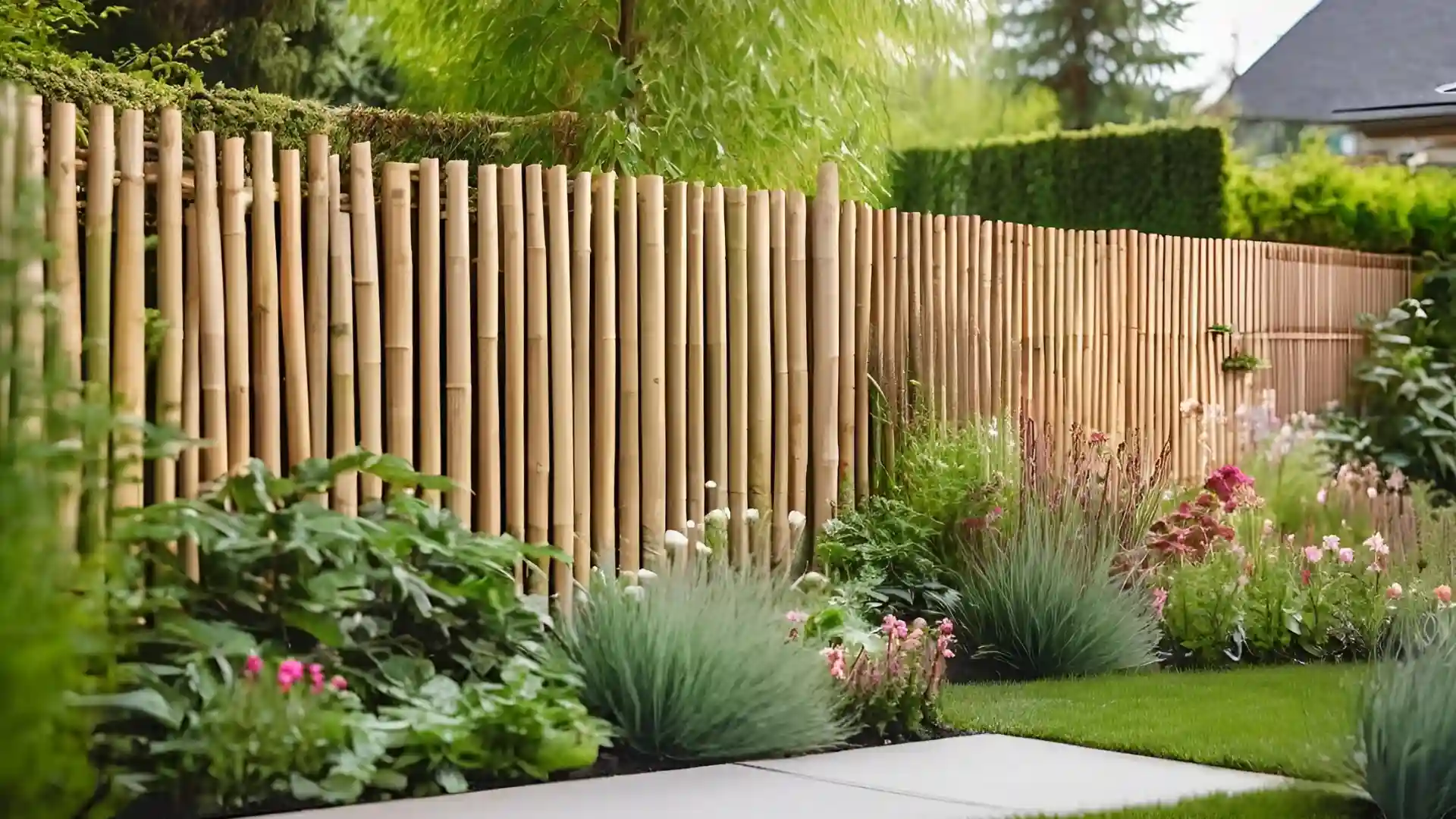DIY Garden Fence: Easy Tips to Be Creative

These affordable and stylish ideas can help you build your DIY garden fence. In doing so, your outdoor space will gloriously come to life with a fence created by YOU, which will not only be a practical barrier to your privacy but also become a charming addition to your immediate surroundings.
Indeed, a beautiful, functional garden fence is integral to your outdoor space. It serves several purposes, such as safeguarding your plants from animals, lending you privacy, and making your outside space visually appealing. While expensive store-purchased fences can make your budget go awry, a DIY garden fence can be much less cost-effective and more tailored to your individual creative and functional requirements.
So, come join us as we dive into different DIY garden fence ideas, the materials to be used, and step-by-step pointers to aid you in building a beautiful, practical garden fence.
DIY Garden Fence: Beneficial Facets
- Cost Savings: Firstly, use affordable or repurposed materials to keep expenses low.
- Customizable Design: In addition, create a fence that matches your garden’s theme and layout.
- Functionality: Moreover, improve privacy, define spaces, and protect your garden from pests.
- Eco-Friendliness: Finally, old wood, used or discarded pallets, and wires are recycled materials that reduce wastage.
Materials for DIY Garden Fence
Common Materials
- Wood: To begin with, pallets, reclaimed wood, or planks offer a classic look.
- Wire: Additionally, chicken wire or mesh provides lightweight and functional fencing.
- Metal: Moreover, pipes or rods contribute to a modern, industrial vibe.
- Plastic: Furthermore, plastic is durable and lightweight, often used for temporary fencing.
- Natural Elements: Lastly, bamboo, branches, or logs create a rustic appearance.
Tools You’ll Need
- Measuring tape:
- Hammer or drill:
- Saw:
- Nails, screws, or staples:
- Post hole digger: (for larger fences)
- Paint or wood sealant: (optional)
DIY Garden Fence Ideas
Pallet Fence
- Materials: To begin with, a sharp saw, wires, and bamboo poles are required.
- Instructions:
- First, saw bamboo poles into equal lengths.
- Next, attach poles together using wire or twine to create panels.
- Then, secure panels to wooden or metal stakes.
- Finally, anchor stakes in the ground.
- Eco-Friendly Path: Moreover, blending naturally with green environs, bamboo is a great eco-friendly option to choose from. A popular renewable material, it is the ideal choice if you decide to tread on this path.
Fence made with Chicken Wire
- Materials: To start, a stapling gun, wooden stakes, and chicken wire are needed.
- Instructions:
- First, drive stakes into the ground at regular intervals.
- Next, unroll chicken wire and staple it to the stakes.
- Then, trim excess wire and secure edges to prevent injuries.
- Best For: Additionally, this is ideal for protecting vegetable gardens from small animals like rabbits.
Recycled Window Frame Fence
- Materials: Old window frames, screws, and hinges.
- Instructions:
- Collect and clean old window frames.
- Arrange frames in a continuous row to form the fence.
- Connect frames using hinges or screws.
- Paint for added style and weatherproofing.
- Unique Touch: Gives a vintage charm while recycling old materials.
Log Fence
- Materials: Logs, nails, and a saw.
- Instructions:
- Cut logs into similar lengths.
- Arrange logs vertically or horizontally.
- Nail or screw logs to wooden posts.
- Treat wood with sealant for longevity.
- Rustic Appeal: Perfect for cottage-style or forest gardens.
PVC Pipe Fence
- Materials: PVC pipes, connectors, and paint.
- Instructions:
- Cut PVC pipes to your desired height.
- Assemble pipes using connectors to form panels.
- Secure panels to stakes or directly into the ground.
- Paint for a polished look.
- Advantages: Simple to assemble, durable, and lightweight.
Living Fence
- Materials: To begin, you will need climbing plants, a trellis, or sturdy wire.
- Instructions:
- First, install a trellis or wire framework around your garden.
- Next, plant climbing vines or shrubs along the base.
- Then, train plants to grow along the framework.
- Eco-Friendly Option: Moreover, this creates a breathable and natural barrier.
A Simple Wooden Fence: How to Build it Step-by-Step
Materials Needed
- Wooden planks or panels:
- Stakes or posts:
- Screws, nails, and a drill:
- Paint or sealant:
Instructions
-
Measure and Mark:
- Determine the dimensions of your fence.
- Mark the area with stakes or chalk lines.
- Dig holes for the posts at regular intervals.
- Insert posts and fill holes with soil or concrete for stability.
- Secure wooden planks or panels to the posts using screws or nails.
- Space planks evenly for a consistent look.
- Sand rough edges for safety.
- For robustness and longevity, paint, stain, or seal the wood.
DIY Garden Fence: Tips and Pointers
- Plan Ahead: First, sketch your fence design and calculate material requirements.
- Use Quality Materials: Additionally, ensure your fence withstands weather and wear.
- Measure Accurately: Moreover, proper measurements ensure a neat and functional fence.
- Include Decorative Features: Furthermore, decorate, embellish, or paint your fence to match your garden flair.
- Secure Anchoring: Finally, firm placement of stakes or posts has to be ensured to prevent sagging or collapse.

